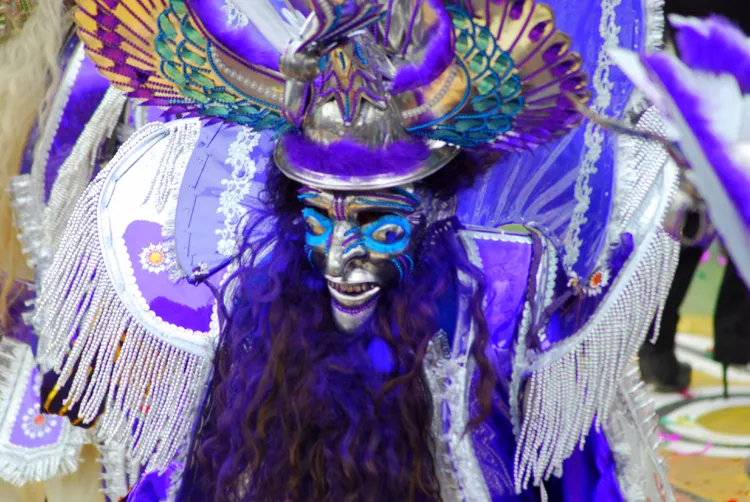Overview of the Oruro Carnival
Carnival Schedule and Significance
In Bolivia, the cities of Oruro, Santa Cruz, Tarija, and La Paz host various carnivals; however, the Oruro carnival stands out as the most famous. This vibrant celebration takes place for the eight days preceding Ash Wednesday. Unlike the Carnaval in Rio, where the escolas de samba select a new theme each year, the Oruro carnival commences with the traditional diablada, or devil dance. This centuries-old ritual remains remarkably unchanged since colonial times.
The Devil Dance
The devil dancers don elaborate costumes featuring heavy masks adorned with horns, bulging eyes, fangs, and long hair. In striking contrast to the fearsome masks, the devils wear sparkling breastplates, silk embroidered shawls, and golden spurs. Accompanying the devil dancers are groups of performers dressed as monkeys, pumas, and insects who dance to the lively tunes of brass bands, pipers, and drummers, creating a loud and frenzied atmosphere.
Emerging from the lineup of devil dancers is China Supay, the Devil’s wife, who entices the Archangel Michael with a seductive dance. Members of local workers’ unions also participate, each carrying small symbols like pickaxes or shovels. Dancers dressed as Incas, complete with condor headdresses and representations of suns and moons, perform alongside dancers portraying the Black slaves brought by the Spaniards to work in silver mines.
Cultural Mix of Traditions
The Oruro carnival, over 200 years old, is considered a vital religious festival, earning recognition from UNESCO as one of the Masterpieces of the Oral and Intangible Heritage of Humanity. Initially an indigenous celebration honoring Andean gods, the carnival adapted to incorporate Catholicism following the arrival of the Spanish.
Today, this grand event showcases a blend of pagan and indigenous traditions with Catholic symbolism, particularly rituals surrounding the Virgin of Candelaria (Virgen del Socavón), celebrated on March 2. Despite having a predominantly Catholic population throughout South America, many of the largest celebrations stem from ancient, indigenous ceremonies transformed to include Christian elements. A notable example is the celebration of the Day of the Dead, which evolved into the Christian All Saints Day.
While the Spanish conquest’s implications and the plight of Bolivian peasants are evident, the festival fundamentally honors the pre-Colonial ceremony of expressing gratitude to the earth mother, Pachamama. This event commemorates the ongoing struggle between good and evil, with early Catholic priests allowing its continued practice through a Christian overlay to pacify local natives.
Celebration Tips
The Carnival festivities extend for several days, as the diablada dancers split into smaller groups to dance around enormous bonfires. Enthusiastic onlookers often join in on the revelry at any moment. Consuming strong Bolivian beer and potent chicha made from fermented cereals and corn can lead to a lively and rowdy atmosphere. Many people find themselves resting in doorways or wherever they may fall asleep, only to wake up and continue celebrating.
If you plan to visit Oruro or other towns celebrating Carnaval, consider these basic safety precautions:
- Dress comfortably
- Give yourself time to acclimate to the altitude
- Be cautious with drinks to avoid severe hangovers
- Leave valuables behind
Experience the vibrant culture and rich history of the Oruro Carnival, a truly unique celebration that captivates both locals and visitors alike.





